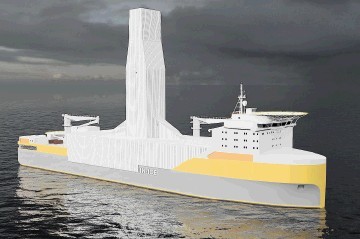
Inocean of Norway has developed an Arctic drillship based on its INO-80 concept and has named the new, fully-enclosed and winterised, environmentally-friendly vessel In-Ice.
The objective of developing the PC-4 ice class vessel is to enable a substantially extended drilling season for a large part of the Arctic; that it has expanded and enhanced logistics and storage facilities, and has been designed in such a way that ice does not get into its moon pool.
According to Inocean’s project manager Jorgen Jorde, it has been possible to keep a conventional bow for operations in rough open water wave conditions, yet be able to move stern-first in ice. This approach is used by a growing number of specialist Arctic-class vessels based on Azipod drives that “pull” when operating astern.
“We envisage the stern more optimised for avoiding ice into the moon pool than for ice-breaking, but also because drilling operations in Arctic areas are expected to be conducted primarily in ‘managed ice’,” said Jorde.
“Positioning will be done through thruster-assisted turret mooring in the shallow parts of the operational area, and by DP in the deeper parts.”
However, Inocean believes a heavy ice class (PC1/2) will not come into use for several years.
It said that this is due to there being a lack of experience with drilling operations in heavy ice conditions with a floating drilling unit, in addition to the limited qualified rescue and oil collection concepts in ice.
“We are very aware of the environmental challenges related to Arctic operations and all the requirements that will apply for activities in this area. This aspect has been crucial for the development of our In-Ice concept,” said Jorde.